
May Garden Guide
Note: This is general information for the entire state of Arkansas on what to plant in your garden in May. For specific questions about planting in your area, please reach out to your local county agent.
Spring is in full swing this month! The threat of ice and frost is over, and we can wind down our cool-season crops and start thinking about our warm-season vegetables! If you've been ready and raring to plant some beautiful flowers in your yard, now's the time to get that started.
Garden Chores for May
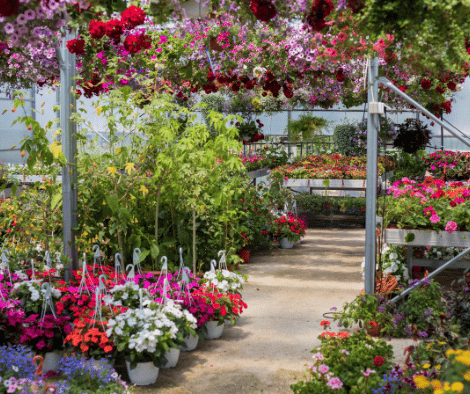
The weather is perfect to get out and work in the yard! Check out which chores we recommend doing:
- Harvest bolting vegetables.
- Prune spring-flowering shrubs as soon as flowers fade.
- Take cuttings to propagate softwood plants like azalea, forsythia, clematis, chrysanthemum, and geranium, if desired.
- Clean up yard/garden.
- Clean and sharpen or replace lawn mower blades.
- Fertilize plants. Trees and shrubs only need fertilizer once a year. Ask your agent for specific fertilizer recommendations.
- Weed garden and replenish mulch, if needed.
- You can move houseplants outdoors this month and divide pot-bound plants when you set them outside.
- Scout for pests.
- Visit a garden center for inspiration for your garden.
Popular May Garden Pests
As the weather gets warmer, more pests will start to show themselves. Some popular pests you may see this month include: bagworms, eastern tent caterpillars, rose slugs, squash vine borers, borers (dogwood, cherry, crabapple), caterpillars, and lace bugs.
Learn more about common spring pests and how to deal with them!
Hummingbird Food
Don't forget to feed our flying friends! Hummingbirds are an Arkansas favorite. Try this recipe for hummingbird food next time you fill up your feeders:
Ingredients:
- 1/4 cup white granulated sugar (don't use alternative or "healthier" sugars as they will spoil faster and can cause a growth of bacteria)
- 1 cup water
Instructions:
- Boil water, add sugar, stir, and cool.
- Do not add red dye.
- If making large batches, store excess in the refrigerator.
- Replace hummingbird nectar every 3–5 days (or every day in 90ºF or higher temperatures).
- Clean the feeders at least once a week with hot water and a bottle brush. Do not use soap or detergent
- Occasionally use a diluted bleach solution to clean the feeders. Rinse thoroughly and air-dry before refilling.
(recipe and tips courtesy of Arkansas Extension wildlife specialist Dr. Becky McPeake)
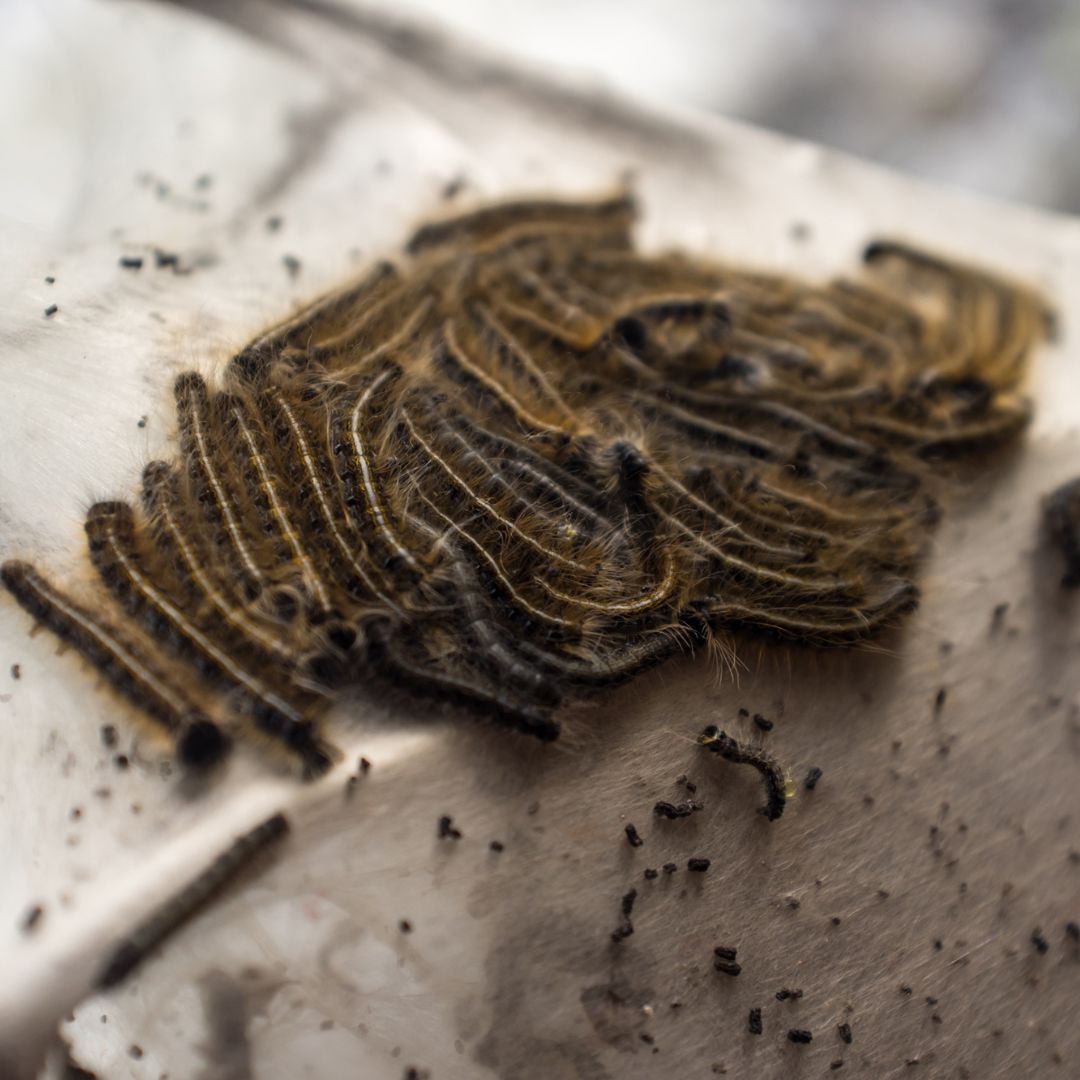
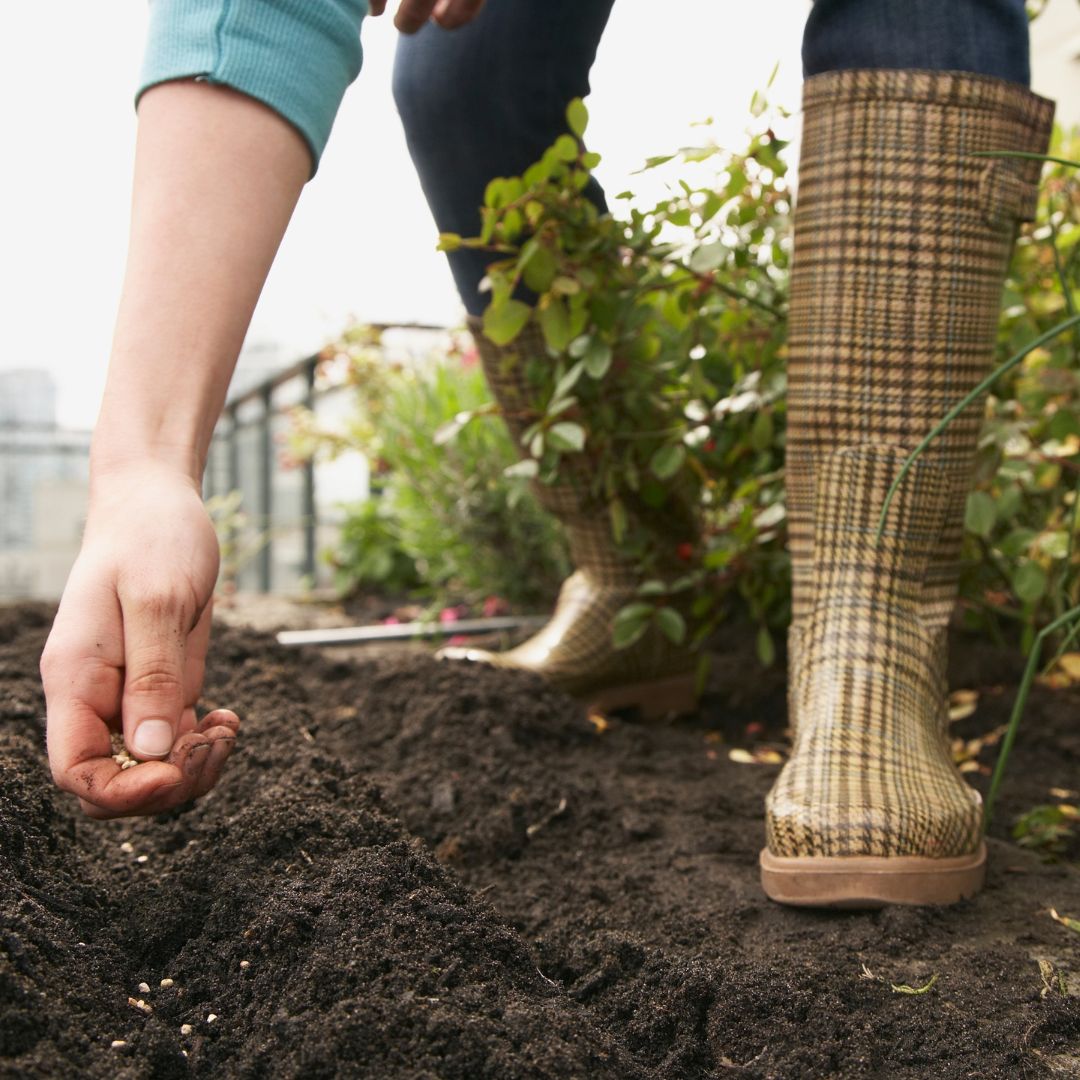
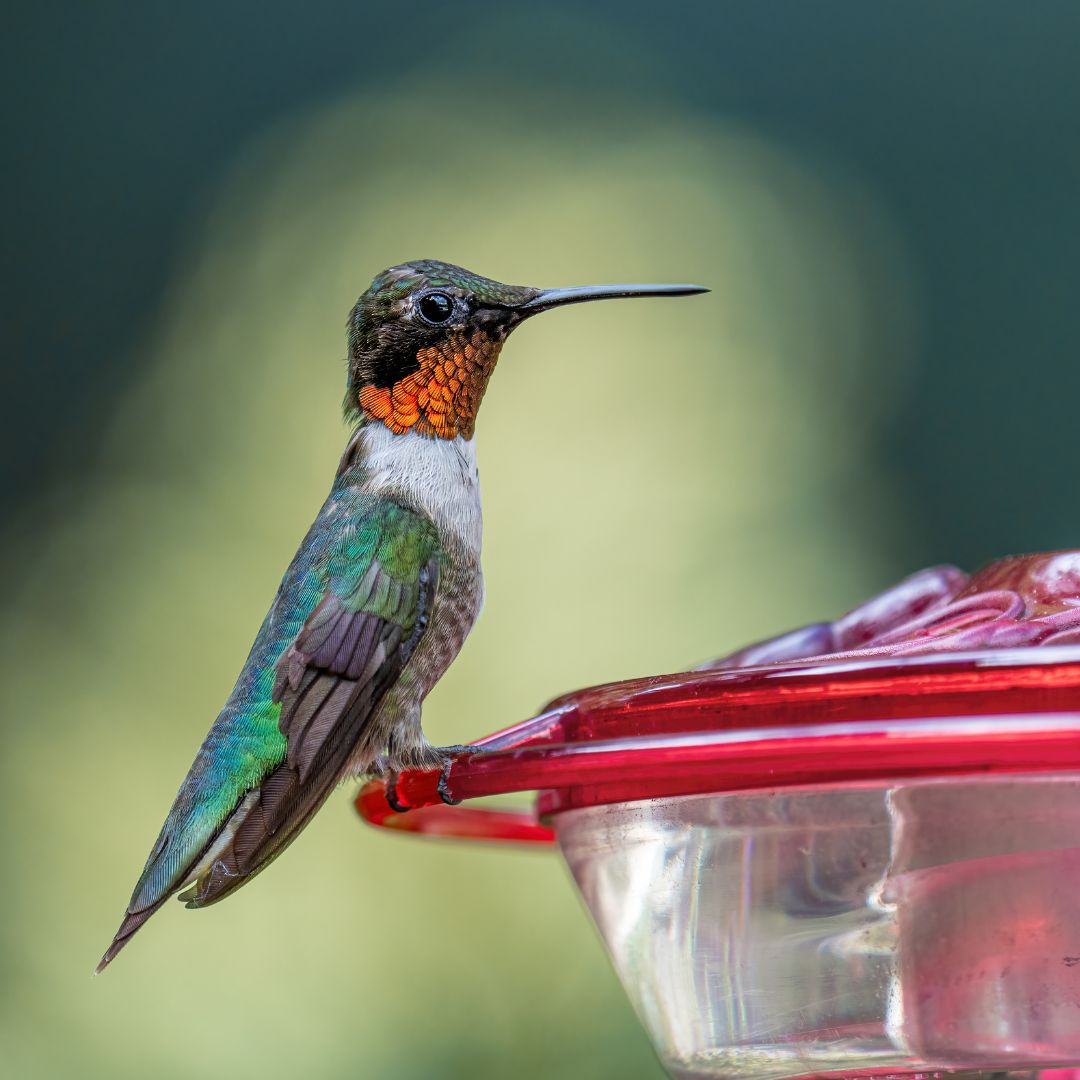
May Vegetable Planting Guide
As you harvest your cool-season vegetables, you can replace them with warm-season ones. Make sure the soil is warm enough before planting southern peas and okra. Find our recommended list of vegetables to plant this month:
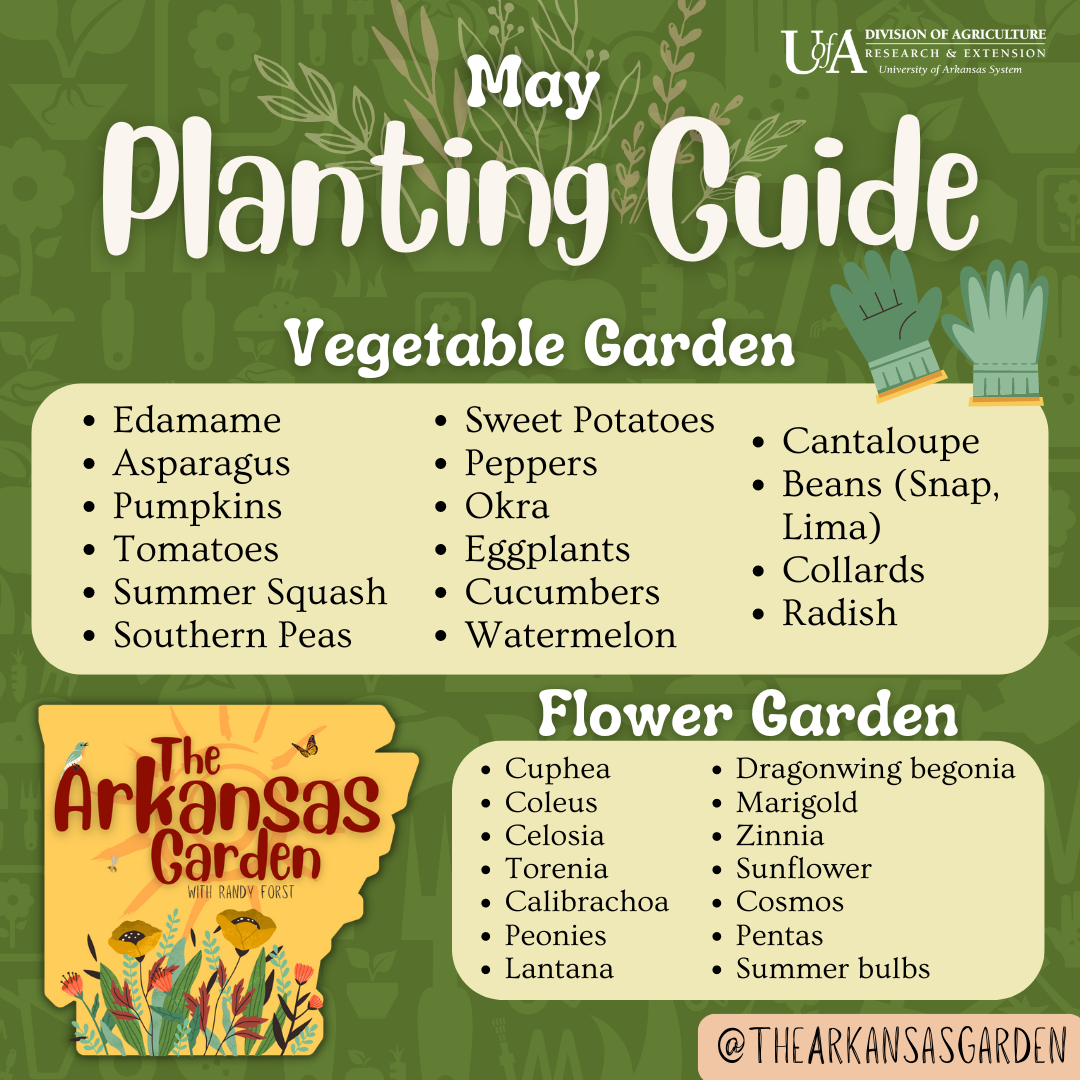
- Edamame
- Asparagus (Perennial)
- Pumpkins
- Tomatoes
- Squash (Summer)
- Southern Peas
- Sweet Potatoes
- Peppers
- Okra
- Eggplants
- Cucumbers
- Watermelon
- Cantaloupe
- Beans (Snap, Lima)
- Collards
- Radish
Direct sow your beans, peas, corn, okra, dill, basil, and cilantro. Treat tomatoes with a fungicide - ask your agent which ones they recommend.
Onion tip: Onions need constant levels of nitrogen. To get big, beautiful onions, fertilize them weekly with a 34-0-0 (1/3 lb per 100 sqft) fertilizer.
Watermelon and cantaloupe take up a lot of space in the garden, so you may wish to trellis these plants.
May Flower Planting Guide
There are so any lovely flowers to plant this month. See our recommendations:
- Cuphea
- Coleus
- Celosia
- Torenia
- Calibrachoa
- Peonies
- Lantana
- Pentas
- Dragonwing begonia
- Direct sow seeds of:
- Marigold
- Zinnia
- Sunflower
- Cosmos
- Summer bulbs to plant:
- Caladium
- Elephant Ear
- Canna
- Gladiolus
- Dahlias
- Lilies
Plant gladioli several times at 2-week intervals for blooms throughout the summer.
Azaleas: If new leaves are yellow with green veins, the plant is iron-deficient. Treat with an acidifying fertilizer or sulfur. If older leaves are turning yellow, the plant is nitrogen deficient. Fertilize to correct.
Mums: Pinch back mums monthly, stopping mid-July, to keep them more compact. If left to grow, they will become sparse and top-heavy.
Peonies: Consider staking the blooms before they open to avoid falling over during a rain.
In Bloom in May
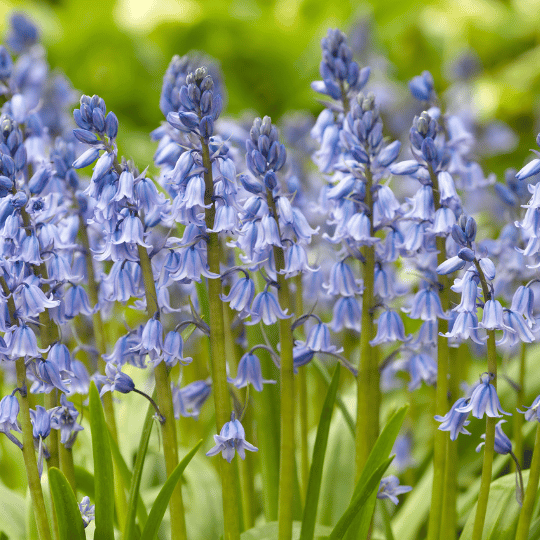
Bluebell
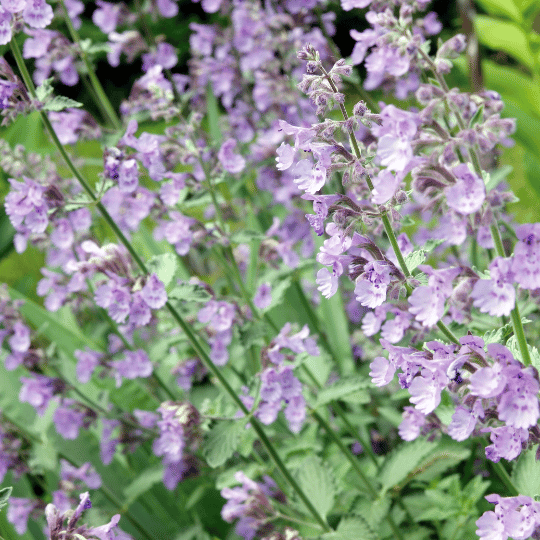
Catmint
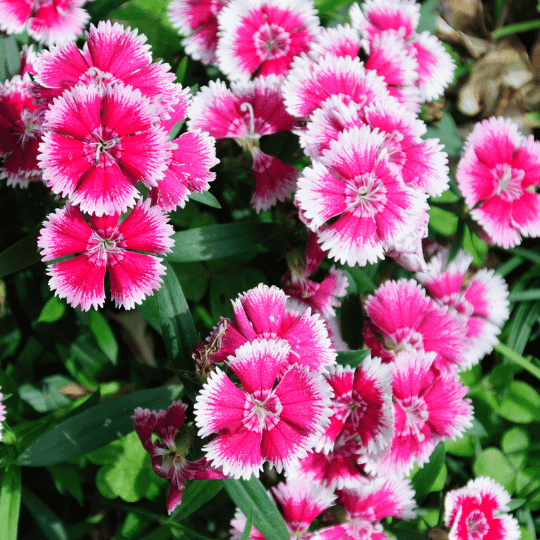
Dianthus
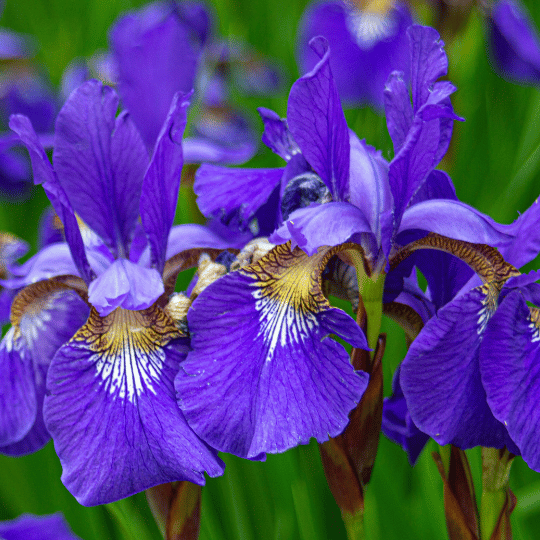
Iris
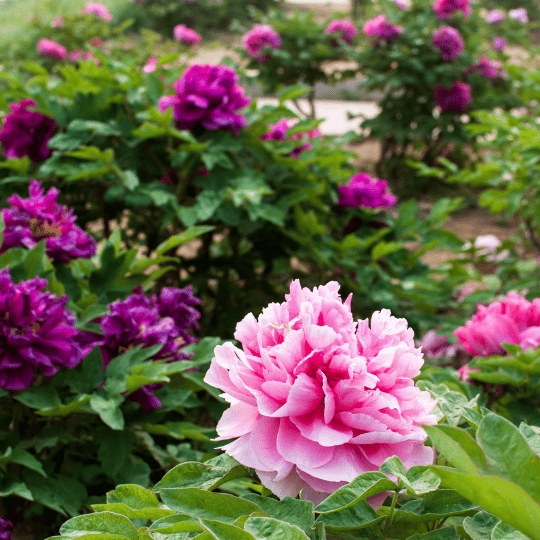
Peony
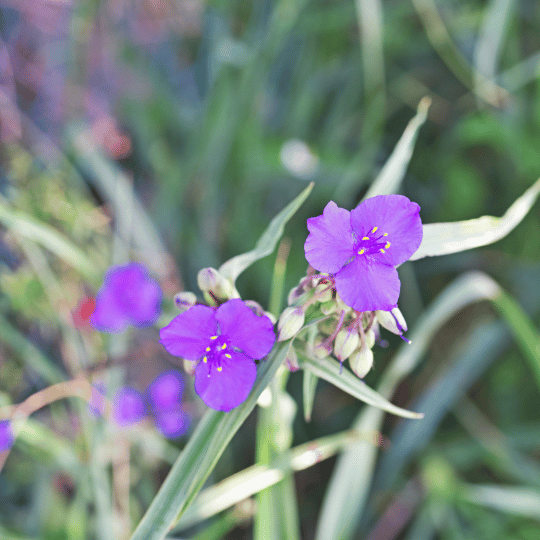
Spiderwort
January | February | March | April | May | June
July | August | September | October | November | December

